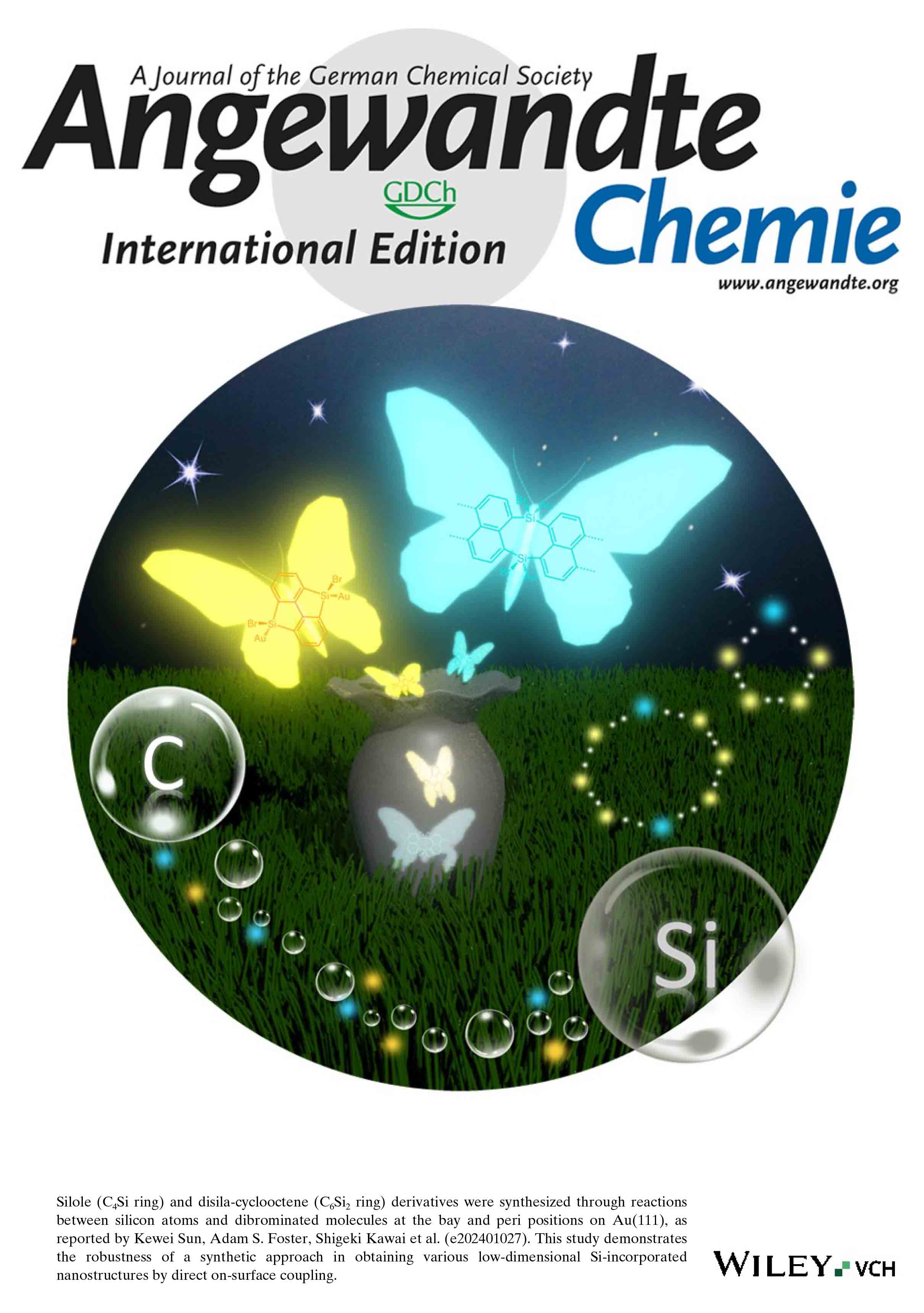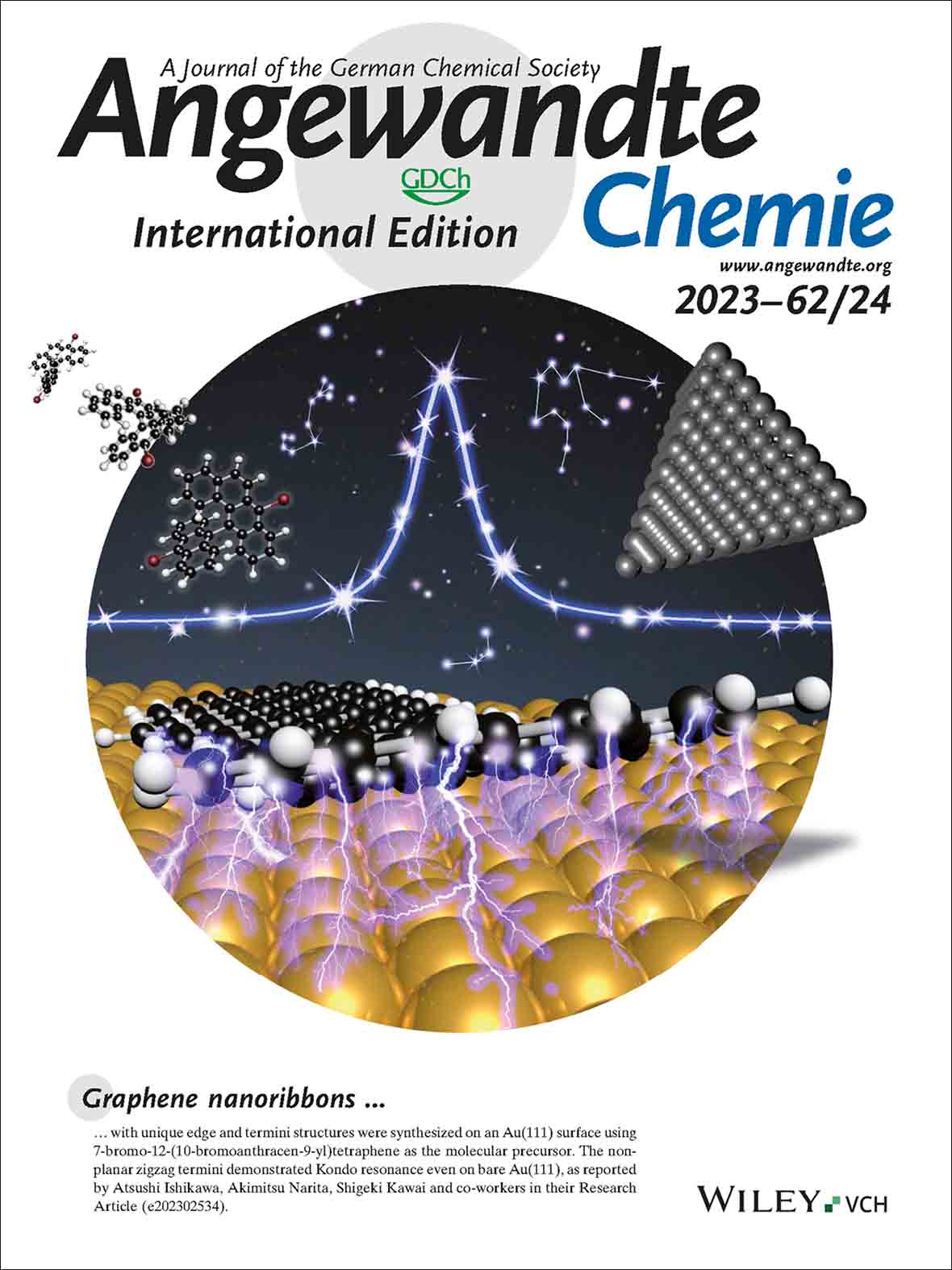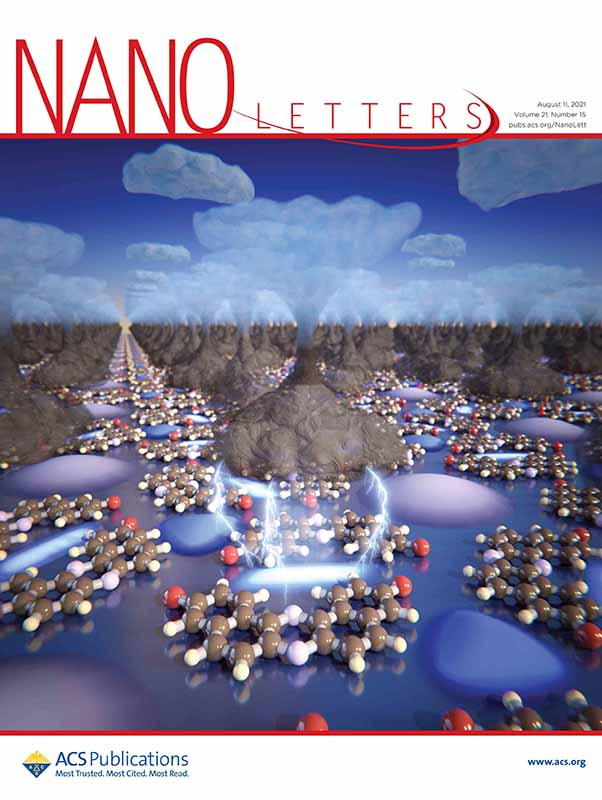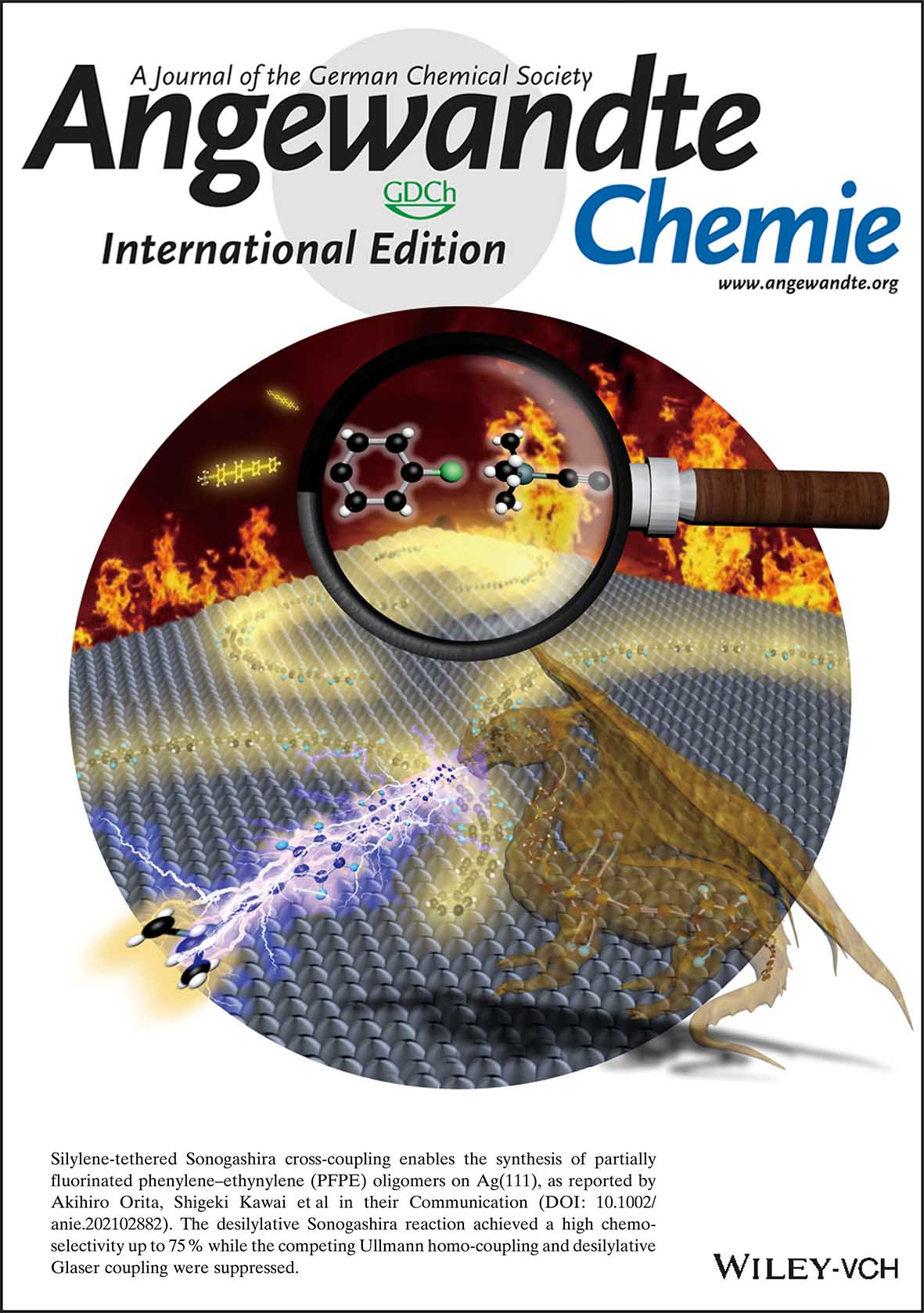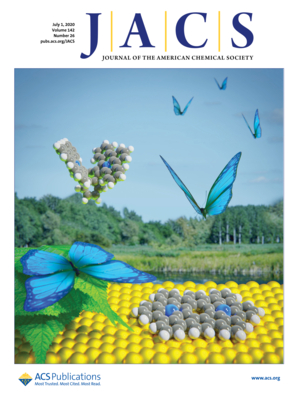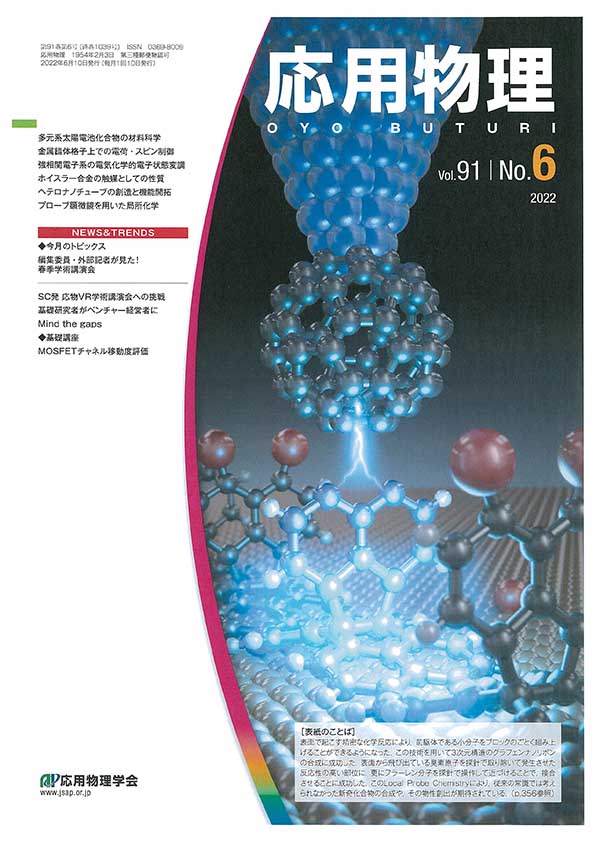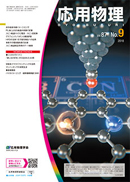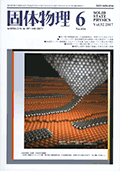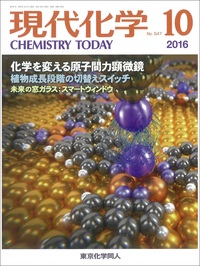Research Topics: On-Surface Chemistry with High-Resolution STM/AFM

We are studying molecules adsorbed on surfaces at a single molecular level with scanning tunnelling microscopy (STM) and atomic force microscopy (AFM) under ultra-high vacuum at low-temperature. The functionalized tip apex with a small molecule or a noble gas atom allows direct visualization of the inner structures of single molecules on surface. It is not exaggeration that this advanced measurement and characterization in STM/AFM provides a major turning point in chemistry. For instance, we can conduct single molecule chemistry, in which (i) we first observe an inner structure of a single molecule on surface, (ii) modify the structure by the tunneling current and/or by contacting another atom/molecule at the reactive part, and (iii) identify the structure of the product. This reaction allows us to synthesize novel compounds, which have been challenging in solution base chemistry. We strongly believe that this on-surface chemistry with high-resolution STM/AFM becomes an important section of chemistry. Besides exploring the basic science, tip-induced and/or thermal on-surface reaction lead to syntheses of novel nanocarbon material such as graphene nanoribbons, which are expected to be a key element in nano-electronics and spintronics. For instance, various applications such as gas sensor, magnetic head, light emitter/detected, switch, electrostatic capacitor, and superlubricity interface can be considered. We wish that our scientific research with STM/AFM develops on-surface chemistry and consequently realizes nanocarbon based devices. We are also developing new instruments and measurement techniques, which are of importance to proceed our studies.
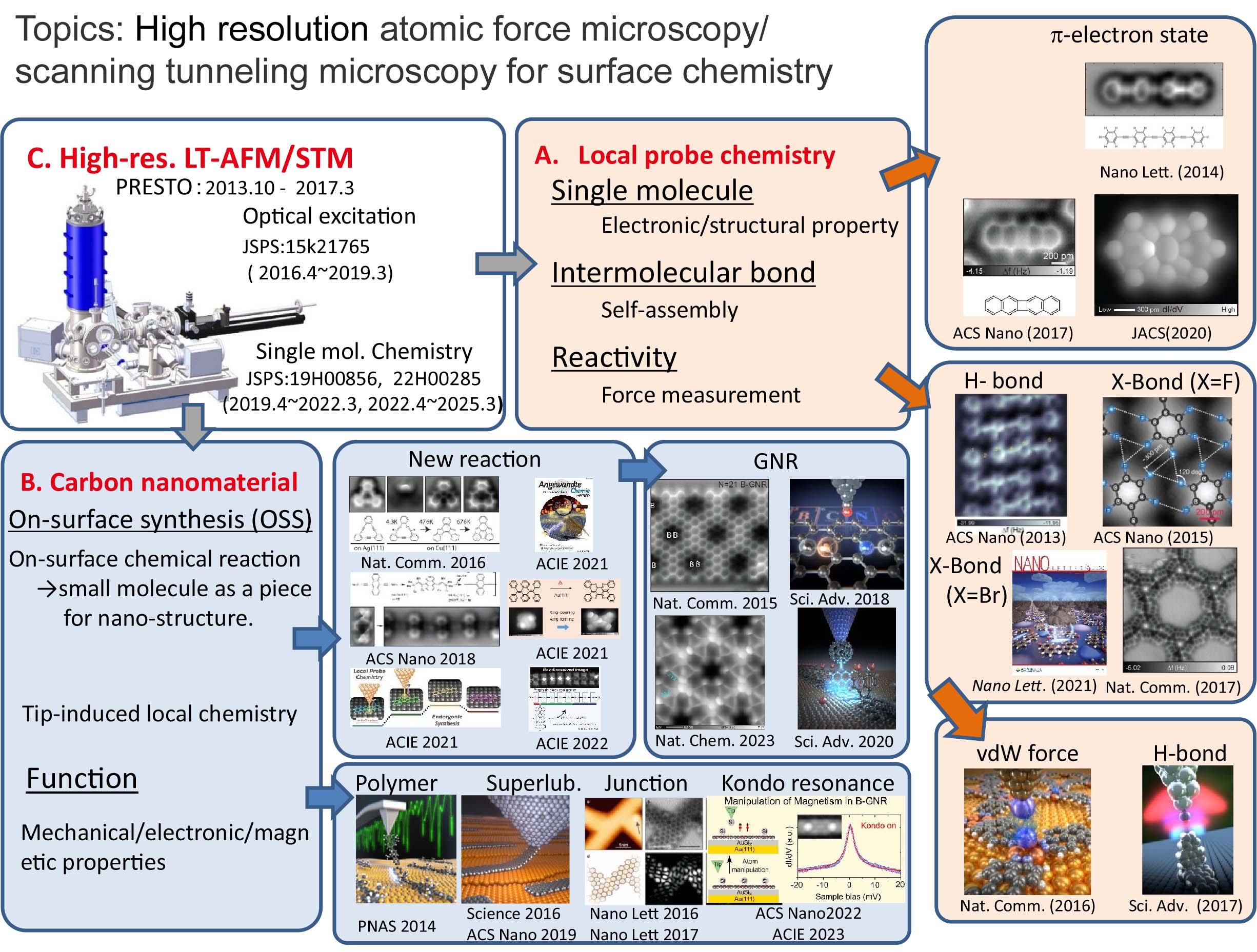
Summary of our study
Previous Achievement

1. Properties of Single Molecules
Aromaticity of single molecules was investigated via direct observations of molecular structures with a carbon monoxide (CO) molecule terminated tip of STM/AFM. We studied the bond orders in the molecules, having four- and eight-membered rings at their centers, by measuring the apparent C-C bond lengths (Fig. 1A and 1B) and found modification of anti-aromatic property at a single molecular level
[1,2]. With heterocyclic compounds with boron and/or nitrogen atoms, the six-membered rings were strongly distorted in the bond-resolved images due to the modulated total charge density of C-B and C-N bonds (Fig. 1C)
[3]. In this way, the bond-resolved imaging allows the determination of the aromatic properties via the direct measurement of the apparent bond lengths.

Fig. 1(A) Dibenzo[b,h]biphenylene[1]. (B) π-extended dDiaza[8]circulene[2]. (C) C4BN six-membered ring in graphene nanoribbon[3].
--Related articles--
[1] S. Kawai, K. Takahashi, S. Ito, R. Pawlak, T. Meier, P. Spijker, F. Federici Canova, J. Tracey, K. Nozaki, A. S. Foster, E. Meyer. ACS Nano 2017, 11, 8122-8130. 
[2] K. Nakamura, Q.-Q. Li, O. Krejci, A. S. Foster, K. Sun, S. Kawai, S. Ito. J. Am Chem. Soc. 2020, 142, 11363. 
[3] S. Kawai, S. Nakatsuka, T. Hatakeyama, R. Pawlak, T, Meier, J. Tracey, E. Meyer, A. S. Foster. Science Advances 2018, 4, eaar7181.  2. Self-Assembled Molecular Structure
2. Self-Assembled Molecular Structure
Using a tip terminated with a CO molecule, we investigated a detailed structure of the self-assembly molecular film condensed by a weak C-F···H-C hydrogen bonding (Fig. 2A)
[4]. While a number of studies on the structural analyses at the nanometer scale had been conducted by STM, this contribution was the first example that CO-AFM can be used for the atomic-scale analysis with experimental data. We also found with this technique that fully-fluorinated molecules adsorbed on Ag(111) form the self-assembled structure as the similar as that of the conventional halogen bonding, namely the extended halogen bonding (Fig. 2B)
[5]. Furthermore, two different complex nanoporous molecular networks were obtained by replacing the central thiophen core in the dibrominated molecule by furan core. The structures allowed precise engineering of quantum dot array coupling through their barrier widths (Fig. 2C)
[6].

Fig. 2(A) C-F···H weak hydrogen bonding[4]. (B) C-F···F extended halogen bonding[5]. (C) C-Br···Br/O multiple-halogen bonding[6].
--Related articles--
[4] S. Kawai, A. Sadeghi, X. Feng, P. Lifen, R. Pawlak, T. Glatzel, A. Willand, A. Orita, J. Otera, S. Goedecker, E. Meyer. ACS Nano 2013, 7, 9098. 
[5] S. Kawai, A. Sadeghi, F. Xu, L. Peng, A. Orita, J. Otera, S. Goedecker, E. Meyer. ACS Nano 2015, 9, 2574. 
[6] I. Piquero-Zulaica, J. Lobo-Checa, A. Sadeghi, Z. M. Abd El-Fattah, C. Mitsui, T. Okamoto, R. Pawlak, T. Meier, A. Arnau, J. E. Ortega, J. Takeya, S. Goedecker, E. Meyer, S. Kawai. Nat. Commun. 2017, 8, 787.  3. Atomic and Intermolecular Forces
3. Atomic and Intermolecular Forces
The van der Waal force between atoms is one of the most important and fundamental interactions in chemistry and physics. We demonstrated a quantitative force measurement by anchoring closed-shell rare gas atoms (Ar, Kr, and Xe) at specific sites of metal organic framework (MOF) networks, and sensing them with the Xe terminated AFM tip (Fig. 3A)
[7]. Furthermore, a quantitative force measurement of the hydrogen bonding between the CO terminated tip and the three dimensional hydrocarbon adsorbed on surface was also demonstrated (Fig. 3B)
[8]. In the measurement, we found that the CO terminated tip can resolve positions of hydrogen atoms in molecules (Fig. 3C). This method allows direct structural analyses of three-dimensional molecules such as DNA.

Fig. 3 Quantitative force measurements of (A) atomic van der Waals interaction[7] and (B) hydrogen bonding. (C) Visualization of hydrogen atoms in three dimensional hydrocarbon[8].
--Related articles--
[7] S. Kawai, A. S. Foster, T. Björkman, S. Nowakowsaka, J. Björk, F. Federici Canova, L. H. Gade, T. A. Jung, E. Meyer. Nature Commun. 2016, 7, 11559. 
[8] S. Kawai, T. Nishiuchi, T. Kodama, P. Spijker, R. Pawlak, T. Meier, J. Tracey, T. Kubo, E. Meyer A. S. Foster. Science Advances 2017, 3, e1603258.  4. On-Surface Chemical Reaction
4. On-Surface Chemical Reaction
We demonstrated the structural analysis of precursor, intermediates, and product in three-step thermal transformation of the acetylene groups in a single molecule (Fig. 4A)
[9]. This study showed that direct identification of the molecular structure with AFM/STM is powerful method to investigate products in on-surface reaction. We also developed on-surface reactions, for instance (i) low temperature removal of dissociated bromine atom from precursor molecules in Ullmann-type reaction by depositing Si atoms on surface
[10], homo-coupling of trimethylsilyl (TMS) groups, which is commonly used as a protecting group in organic chemistry (Fig. 4B)
[11], (iii) silylene-tethered Sonogashira coupling on for head-to-tail oligomerization
[12], (iv) defluorinative homo-coupling for on-surface synthesis of multi-block co-oligomers (Fig. 4C)
[13].

Fig. 4(A) Structural analysis of sequential on-surface reaction[9]. (B) Homo-coupling between TMS groups[11]. (C) Hetero-coupling between TMS and -Cl groups[12]. (D) Homo-coupling between CF3 groups for syntheses of block co-oligomers[13].
--Related articles--
[9] S. Kawai, V. Haapasilta, B. D. Lindner, K. Tahara, P. Spijker, J. A. Buitendijk, R. Pawlak, T. Meier, Y. Tobe, A. S. Foster, E. Meyer. Nature Commun. 2016, 7, 12711. 
[10] K. Sun, T. Nishiuchi, K. Sahara, T. Kubo, A. S. Foster, S. Kawai. J. Phys. Chem. C 2021, 124, 19675. 
[11] S. Kawai, O. Krejčí, A. S. Foster, R. Pawlak, F. Xu, L. Peng, A. Orita, E. Meyer. ACS Nano 2018, 12, 8791. 
[12] K. Sun, K. Sagisaka, L. Peng, H. Watanabe, F. Xu, R. Pawlak, E. Meyer, Y. Okuda, A. Orita, S. Kawai. Angew. Chem. Int. Ed. 2021, 60, 19598. 
[13] S. Kawai, A. Ishikawa, S. Ishida, T. Yamakado, Y. Ma, K. Sun, Y. Tateyama, R. Pawlak, E. Meyer, S. Saito, A. Osuka. Angew. Chem. Int. Ed. 2022, 61, e202114697.  5. Graphene Nanoribbons
5. Graphene Nanoribbons
On-surface reaction allows systematic syntheses of graphene nanoribbons (GNRs) with controlled edge structures and widths. We presented GNRs, substituted by boron atoms at the specific sites (Fig. 5A)
[14]. We found that the boron substituted GNR can be used as an adsorption element of small gas molecules s such as nitric oxide (NO). We also synthesized GNR co-substituted with boron and nitrogen atoms
[15]. Besides the heteroatom substituted GNR, the atomically-controlled junction of n=7 armchair GNRs were obtained by using 1,3,6,8-tetrabromopyrene as a linker (Fig. 5B)
[16]. In contrast to such planar GNRs, we realized three-dimensional GNR (Fig. 5C)
[17]。

Fig. 5(A) Boron substituted graphene nanoribbon[14]. (B) Atomically defined junction of GNRs[16]. (C) Three-dimensional GNR[17].
--Related articles--
[14] S. Kawai, S. Saito, S. Osumi, S. Yamaguchi, A. S. Foster, P. Spijker, E. Meyer. Nature Commun. 2015, 6, 8098. 
[15] S. Kawai, S. Nakatsuka, T. Hatakeyama, R. Pawlak, T, Meier, J. Tracey, E. Meyer, A. S. Foster. Science Advances 2018, 4, eaar7181. 
[16] K. Sun, O. Krejči, A. S. Foster, Y. Okuda, A. Orita, S. Kawai. J. Phys. Chem. C. 2019, 123, 17632. 
[17] S. Kawai, O. Krejčí, T. Nishiuchi, K. Sahara, T. Kodama, R. Pawlak, E. Meyer, T. Kubo, A. S. Foster. Science Advances 2020, 6, eaay8913.  6. Tip-Induced Local Chemistry
6. Tip-Induced Local Chemistry
Highly reactive radical species can be synthesized by removing a halogen atom from a molecule by tip and is usually stabilized by connecting to the surface metal atom, the so-called short-lived. If the radical synthesis is conducted on an insulating thin film of NaCl, it becomes long-lived. Even higher reactive compound of diradical can be synthesized by dehalogenation twice, subsequently leading to the structural isomerization
[18], that is the tip-induced local probe chemical reaction (Fig. 6A). Besides the dissociation reaction of the planar molecule, we found that the debromination can be caused on the three-dimensional graphene nanoribbon. The unique configuration, in which the radical part points out in the normal direction, offers an ideal playground for the local probe chemistry. We demonstrated the bromination (Fig. 6B) and the synthesis of C
60 and 3D-GNR complex by the tip induced addition reaction (Fig. 6C)[
[19].
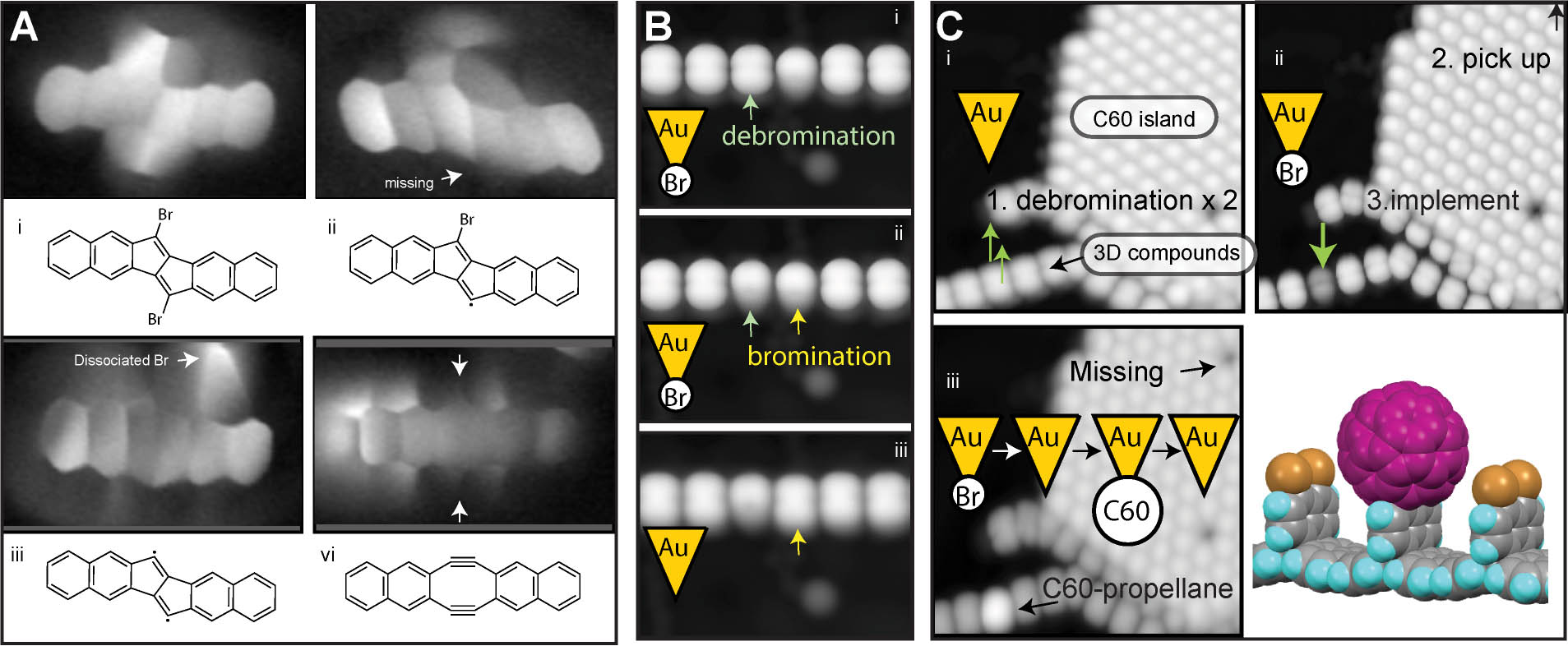 Fig. 6(A) Tip-induced debromination and structural isomerization[18]. (B) Tip-induced debromination and bromination and (C) addition reaction to synthesize C60-3D-GNR complex[19].
Fig. 6(A) Tip-induced debromination and structural isomerization[18]. (B) Tip-induced debromination and bromination and (C) addition reaction to synthesize C60-3D-GNR complex[19].
--Related articles--
[18] S. Kawai, V. Haapasilta, B. D. Lindner, K. Tahara, P. Spijker, J. A. Buitendijk, R. Pawlak, T. Meier, Y. Tobe, A. S. Foster, E. Meyer. Nature Commun. 2016, 7, 12711. 
[19] K. Sun, T. Nishiuchi, K. Sahara, T. Kubo, A. S. Foster, S. Kawai. J. Phys. Chem. C 2021, 124, 19675. 
7. Properties of Nanocarbon Structures
It was challenging to measure the mechanical property of a given molecular strand. We demonstrated precise measurement of single oligomer synthesized by on-surface reaction, by picking up with an AFM tip (Fig. 7A)
[20]. This method allowed determination of the adsorption energy of each unit. Furthermore, we investigated the mechanism of structural superlubricity at the contact between the graphene nanoribbon (GNR) and the underlying Au(111) surface by dragging the GNR by the tip (Fig. 7B)
[21]. Boron doped GNR has a S=1/2 spin, which is usually quenched by the underlying metal substrate. We found that the spin state can be recoverd after removal of a Si atom adsorbed on the boron site of GNR formed on AuSi
x layer on Au(111). We demonstrate that a combination of the on-surface synthesis and the tip manipulation led to successful measurements of nano-mechanics and magnetism in the nanocarbon structures at single molecular level.

Fig. 7(A) Lifting measurement of a single oligomer[20]. (B) Structural superlubricity with GNR[21]. (C)Spin measurement of boron doped GNR[22].
--Related articles--
[20] S. Kawai, M. Koch, E. Gnecco, A. Sadeghi, R. Pawlak, T. Glatzel, J. Schwarz, S. Goedecker, S. Hecht, A. Baratoff, L. Grill, E. Meyer. Proc. Natl. Acad. Sci. USA 2014, 111, 3968. 
[21] S. Kawai, A. Benassi, E. Gnecco, H. Söde, R. Pawlak, K. Mullen, D. Passerone, C. Pignedoli, P. Ruffieux, R. Fasel, E. Meyer. Science 2016, 351, 957. 
[22] K. Sun, O. J. Silveira, S. Saito, K. Sagisaka, S. Yamaguchi, A. S. Foster, S. Kawai. ACS Nano 2022, 16, 11244. 
8. Bimodal AFM
Among several resonance modes of the AFM force sensor, conventional AFM usually uses the frequency shift of the first flexural mode to detect vertical tip-sample interaction forces. We proposed bimodal AFM, in which two resonance modes are simultaneously excited and detected, to realize higher sensitive measurement by small amplitude operation
[23] and multi-dimensional vector force measurement. For instance, vertical and lateral tip-sample interaction forces can be detected by frequency shifts of flexural and torsional oscillation modes, respectively (Fig. 8A)
[24]. Since the lateral force on an atomically flat surface corresponds to only short-ranged atomic forces, atomically resolved imaging can routinely be obtained even with a non-ideal tip. Furthermore, this high-sensitive measurement realized atom manipulation on bulk insulating surface (NaCl), in which Br and Cl atoms were replaced by the AFM tip. (Fig. 8B)
[25].In a vicinity of the atomic step of the LiF(001) surface, the imbalanced electrostatic force, due to the sub-picometer shifts of anion and cation ions in the opposite directions by the applied bias voltage, was detected by the shifts of the torsional resonance (Fig. 8C)
[26].

Fig. 8(A) Atomically resolved graphite surface by bimodal AFM at room temperature[24]. (B) Atom manipulation on NaCl(001)[25]. (C) Modulated electrostatic force around the step of LiF(001)[26].
--Related articles--
[23] S. Kawai, T. Glatzel, S. Koch, B. Such, A. Baratoff, E. Meyer, Phys. Rev. Lett. 2009, 103, 220801. 
[24] S. Kawai, T. Glatzel, S. Koch, B. Such, A. Baratoff, E. Meyer, Phys. Rev. B. 2010, 81, 085420. 
[25] S. Kawai, A. S. Foster, F. F. Canova, H. Onodera, S. Kitamura, E. Meyer, Nature Commun. 2014, 5, 4403. 
[26] S. Kawai, F. F. Canova, T. Glatzel, T. Hynninen, E. Meyer, A. S. Foster, Phys. Rev. Lett. 2012, 109, 146101. 






 Fig. 6(A) Tip-induced debromination and structural isomerization[18]. (B) Tip-induced debromination and bromination and (C) addition reaction to synthesize C60-3D-GNR complex[19].
Fig. 6(A) Tip-induced debromination and structural isomerization[18]. (B) Tip-induced debromination and bromination and (C) addition reaction to synthesize C60-3D-GNR complex[19].


